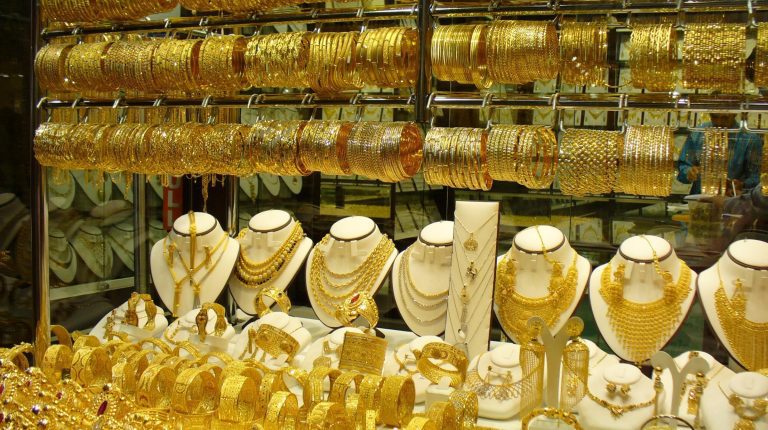The first quarter of 2024 saw unprecedented fluctuations in Egypt’s gold prices, set against a backdrop of significant economic shifts and currency exchange rate volatility. Despite predictions to the contrary, gold prices soared to record highs before experiencing a notable decline at the quarter’s end, as reported by gold bullion analysts.
Throughout Q1, gold prices rose modestly by 2.8%. The year commenced with gold trading at EGP 3,170 per 21K gram, concluding in March at EGP 3,080 per gram—a net increase of EGP 90 per gram. The quarter’s peak prices ranged between EGP 4,150 and EGP 4,200 per gram, while the lowest recorded price was EGP 2,650 per gram.
January’s gold prices surged by 26%, adding EGP 830 to the value per gram and reaching the highest price point of the quarter—averaging between EGP 4,150 and EGP 4,200 per gram. This spike marked the highest price ever recorded for gold in Egypt.
In February, the upward trend continued with a 26.8% increase, translating to a gain of EGP 1,075 per gram. The highest price remained within the EGP 4,150 to EGP 4,200 per gram bracket. However, March saw a reduction in gains to 5.3%, with a profit of EGP 155 per gram and the highest price recorded at EGP 3,350 per gram.
From the start of the year until mid-February, gold prices sharply escalated due to concerns over Egypt’s economic outlook and a surge in the dollar’s value on the parallel market. This, coupled with the growing demand for gold as a safe investment and inflation hedge, propelled the price increases.
However, the announcement of the Ras El-Hekma deal towards the end of February led to a decrease in the dollar exchange rate in the parallel market, which in turn caused a drop in gold prices before the deal’s official declaration. This was coupled with the decision to liberalize the exchange rate at the start of March, after which economic conditions began to stabilize due to significant foreign exchange inflows. This influx of foreign currency contributed to the steadiness of both the exchange rate and gold prices.
Additionally, several key events impacted gold prices in the first quarter of the year. The National Bank of Egypt and Banque Misr launched new savings certificates offering a 23.5% monthly return and a 27% return upon the completion of the one-year term for both certificates. In March, the introduction of new savings certificates with a diminishing interest rate of 30% and a three-year term was announced. Furthermore, the Central Bank of Egypt (CBE) increased interest rates by a total of 800 basis points, with a 200-point rise in February and a 600-point increase in March, setting the main operation rate at 27.75%.
Moreover, the annual core inflation rate in February escalated to 35.12%. Additionally, a substantial real estate investment deal was struck in Ras El Hekma between Egypt and the UAE, with total investments amounting to $35bn.
The CBE transitioned to a market-driven exchange rate policy, resulting in an official bank dollar exchange rate surge of 66%, reaching EGP 50.85 per dollar, before settling down to an average of EGP 47.30 per dollar by the end of March.
On the international front, the International Monetary Fund confirmed on March 29 an increase in Egypt’s bailout loan from $3bn to $8bn, with an additional potential loan of $1.2bn from the Environmental Sustainability Fund. Moreover, the World Bank Group has pledged over $6bn in support to Egypt for the next three years.
An agreement was also reached with the European Union for a financial package valued at $8.06bn for 2024-2027. In the realm of credit ratings, Moody’s upgraded Egypt’s outlook from negative to positive while maintaining a Caa1 rating. Similarly, Standard & Poor’s improved its outlook for Egypt to positive from previously being stable.




